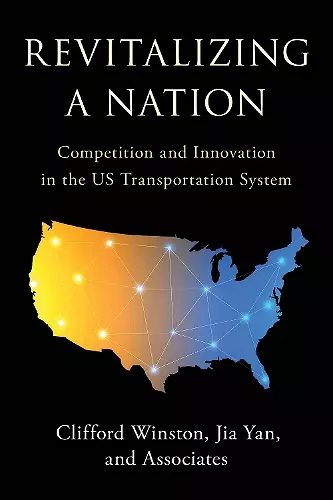Revitalizing a Nation
Competition and Innovation in the US Transportation System
Clifford Winston author Jia Yan author
Format:Paperback
Publisher:Bloomsbury Publishing PLC
Published:20th Dec '23
Currently unavailable, and unfortunately no date known when it will be back

An efficient transportation system reduces the cost of distance by moving people and goods from their origins to their destinations as cheaply, quickly, and safely as possible. By enabling individuals and firms to be more productive, transportation provides the foundation for the development and growth of industries and an entire economy.
Clifford Winston, Jia Yan, and Associates argue that competition and innovation are the key drivers of an efficient transportation system. The authors provide new evidence that transportation deregulation and privatization that spur additional competition among carriers and infrastructure providers, as well as new innovations that create autonomous transportation services, have the potential to rid the US transportation system of its major inefficiencies and revitalize the nation.
“Since its origins in France in the early 19th century, transportation planning has been an incubator for the economic theory of incentives and consumer behavior. In its more recent history in the United States, transportation planning has become a branch of civil engineering, with a command-and-control approach to the design of transport infrastructure and the operation of transit systems. This book provides policy recommendations and empirical evidence that the use of economic markets and the incentives introduced through decentralization, privatization, and competition can increase the efficiency and utility of our transportation system. This is a provocative message that will get pushback from the transportation community, but it initiates a dialogue that can lead to significant improvements in the design and operation of our transportation infrastructure.” -- Daniel L. McFadden, E. Morris Cox Professor Emeritus of Economics, University of California, Berkeley, Nobel Laureate in Economics
“This timely volume presents new research on the efficient design of transportation systems, reminds us that how a nation deploys transportation technology and utilizes its public and private transportation capital are key determinants of economic performance, and highlights the central role of public policy in the transportation sector.” -- James M. Poterba, Mitsui Professor of Economics, Massachusetts Institute of Technology
“Recent years have seen a resurgence of interest in transportation economics, in part stimulated by new technologies such as electric and autonomous vehicles. This volume provides an invaluable economic analysis of some of the key public policy issues. It will be of great interest to both research scholars and public policymakers.” -- Stephen J. Redding, Harold T. Shapiro '64 Professor of Economics, Princeton University
ISBN: 9780815740414
Dimensions: 229mm x 152mm x 29mm
Weight: 445g
368 pages